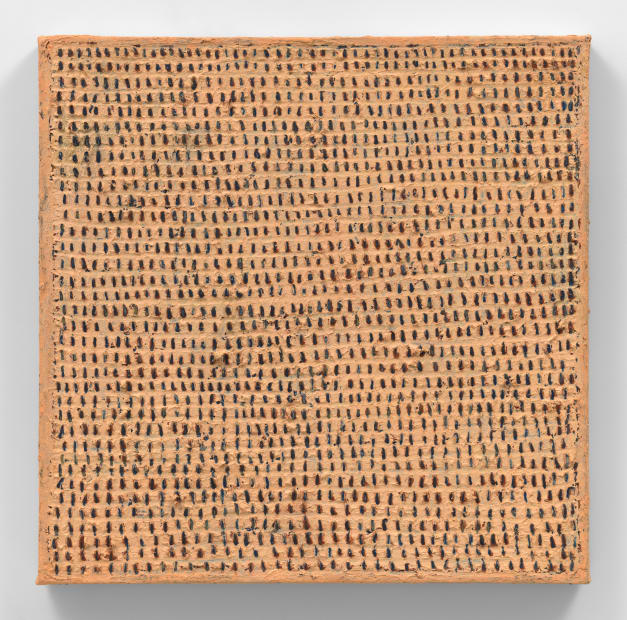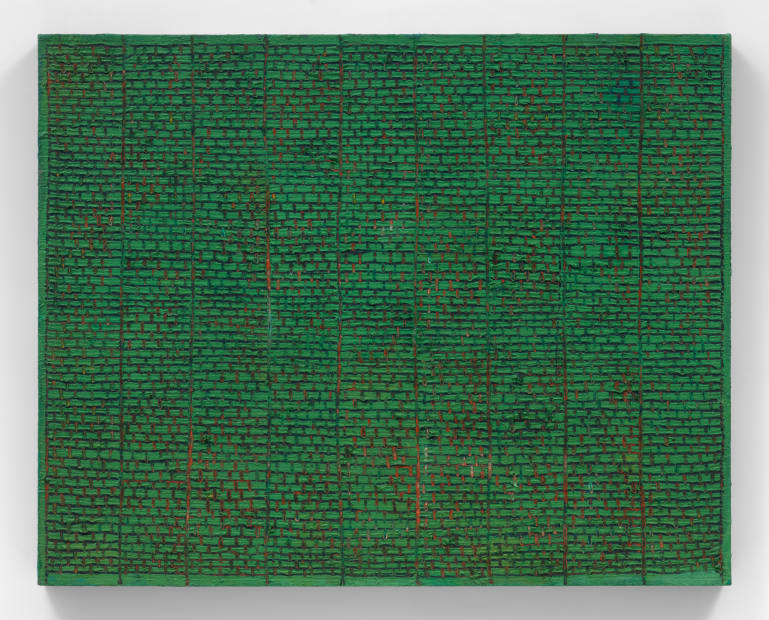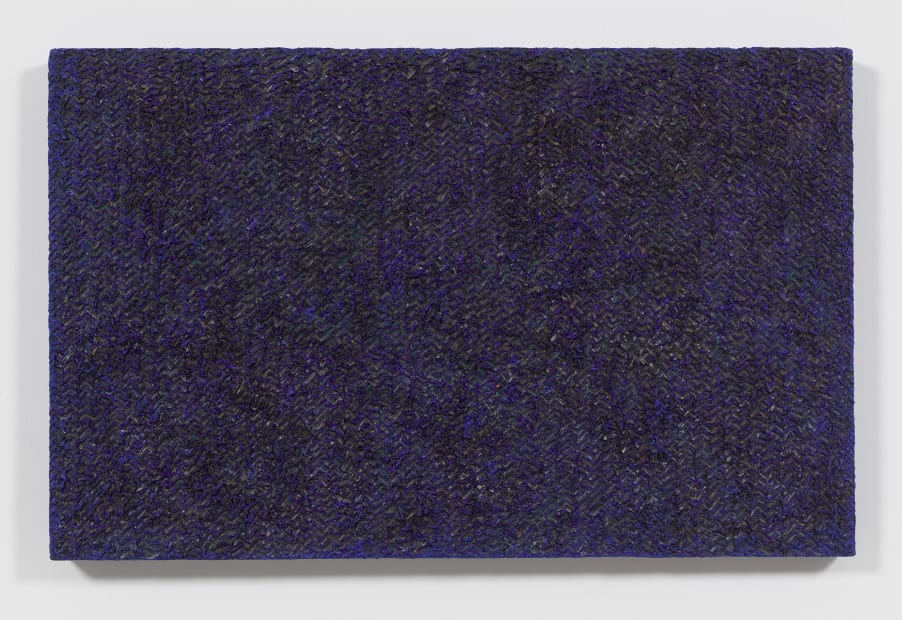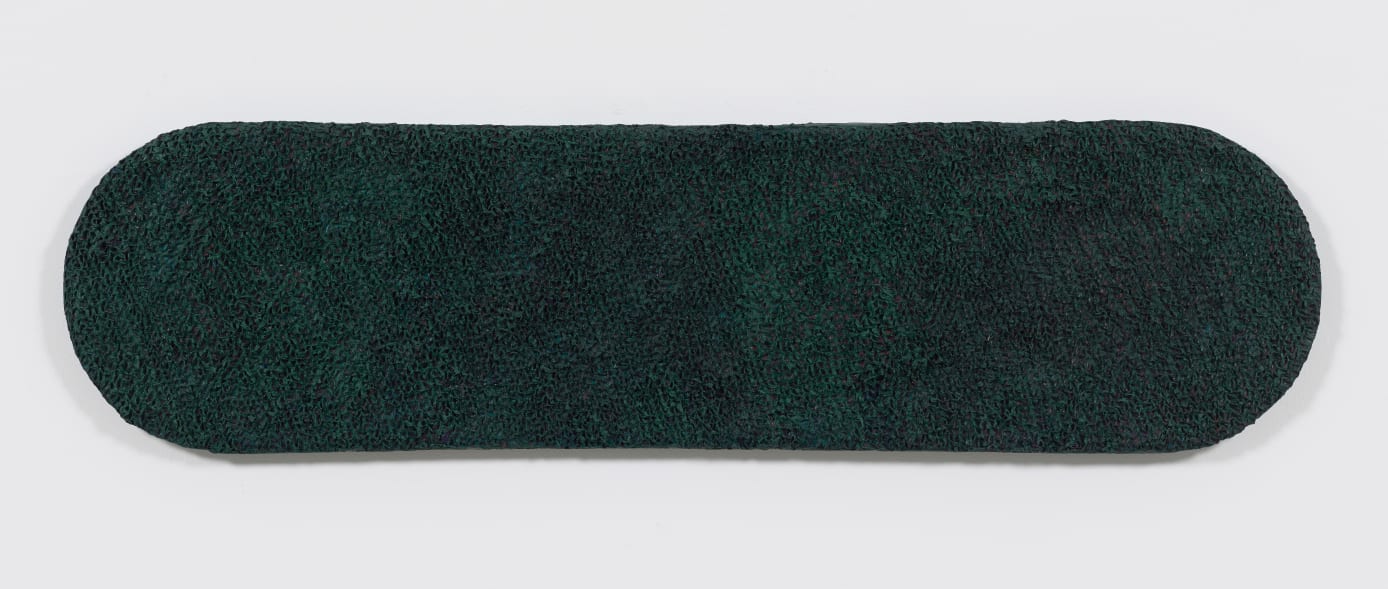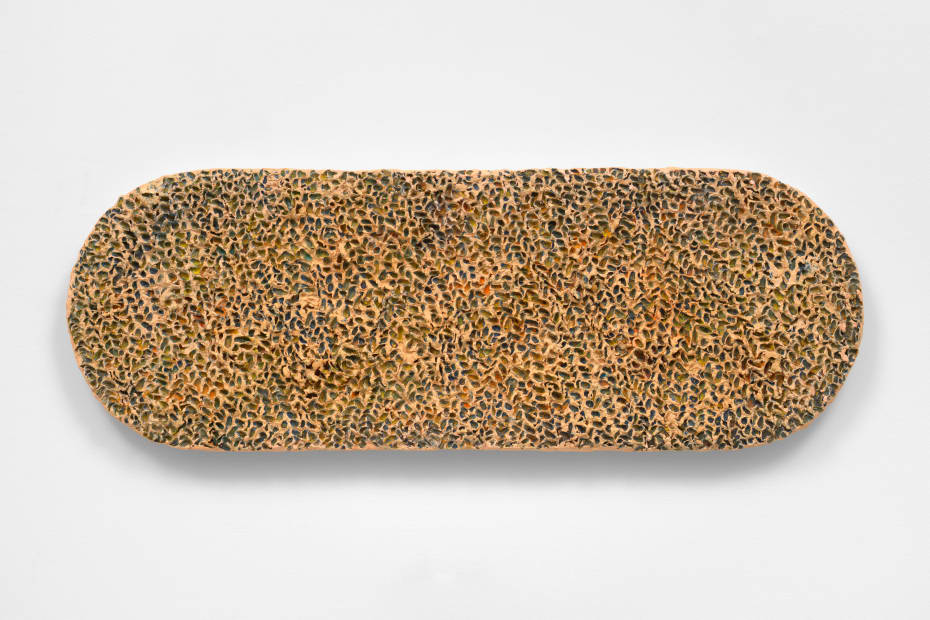Harmony Hammond’s Weave Paintings (1973–77) epitomize her commitment to the exploration of form while interrogating historical narratives of abstraction. To make these paintings, Hammond applied successive layers of oil paint mixed with Dorland’s wax, incising the still wet surface with patterns. In a crucial distinction from previous fabric-based bodies of work such as her Presences (1971–72) and Floorpieces (1973), her Weave Paintings refer to weaving, particularly North American basket-weaving, rather than directly incorporating the craft’s materials or processes. On this visual motif Hammond remarks, “Weaving, of course, implies the grid, and the grid can suggest weaving. If you think of stitching as marking, and marking in gridded space, then before you know it, you are into pattern and decoration … I was always very interested in the notion of the stitching as a repetitive gesture—reflecting the repetition in women’s lives—and a connective gesture—a means of piecing together or building ‘wholes’ out of fragments.”
